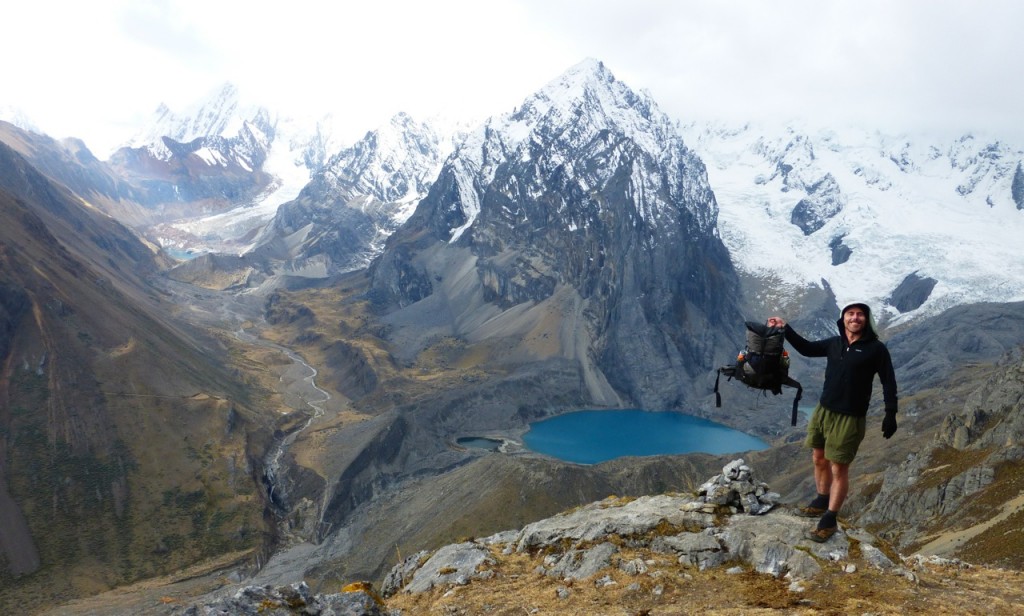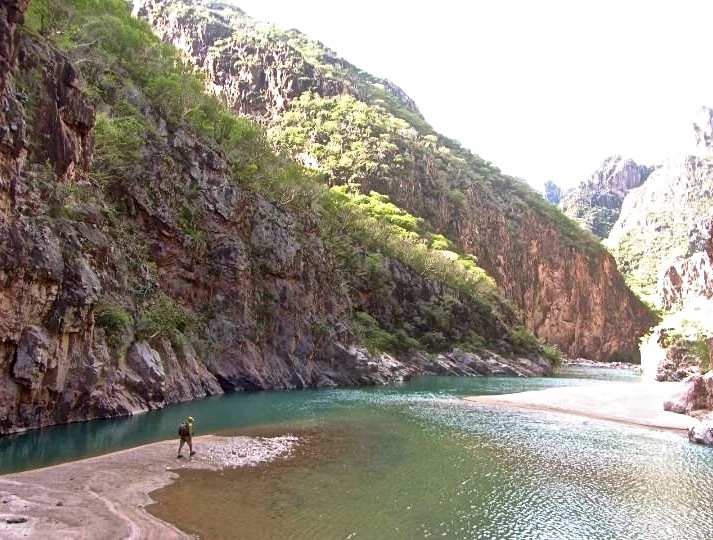
Cordillera Huayhuash Circuit, Peru, 2014
There is no universal blueprint as to how you should backpack. We all have our own motivations, needs, and levels of experience. That said, one thing upon which everyone can agree is that hiking is substantially easier and more enjoyable, if your pack doesn’t weigh the proverbial ton. My five basic principles of Going Lighter in the wilderness are as follows:
1. Safety First
In this day and age, any Tom, Dick, and Harriet with a few bucks and an internet connection can carry a lightweight load. What isn’t so easy, is being comfortable and safe while carrying that lightweight load in a wide variety of conditions. That takes time, practice and open-mindedness. Don’t feel like you need to rush the process.
Going lighter should ideally be a gradual development, which parallels a corresponding improvement of a hiker’s backcountry skill set. When starting out, it is better to err on the side of caution by taking a little more than the bare necessities. Time spent in various types of environments will teach you what you can and can’t do without.
2. Leave Behind the Non-Essentials
It’s not always easy to distinguish the essentials from the non-essentials. There is no secret formula. Basically it comes down to experience, individual preference and the dictates of the environment in which you are hiking.
Before each and every trip, do a quick review of each article in your pack and ask yourself two questions: 1. Do I really need it?; 2 What will happen if I don’t have it? Hikers are often surprised at the number of redundant items they have been carrying out of habit rather than necessity.

Justin “Trauma” Lichter | Copper Canyon Traverse, Mexico, 2013.
3. Downsize the Essentials
Lighter materials and innovative designs mean that it is easier than ever before to lower your pack weight simply by using lighter versions of essential items (e.g. shelter, sleeping bag, backpack, sleeping mat). Avoid overcompensating on your next hiking trip by: A. Thoroughly researching what types of conditions you are likely to encounter, and; B. Figuring out what you need to be safe and comfortable whilst hiking in those conditions. For example, chances are you don’t need a sleeping bag rated to -17° celsius if you are hiking in the middle of summer.
4. Emphasize multi-purpose items
Necessity is the mother of invention. Many items in your backpacking kit, such as sleeping mat, hiking poles and cooking pot can serve more than one purpose. By emphasizing multi-function equipment, you can eliminate redundant or duplicate items and thereby decrease overall pack weight. See Double Duty for a list of 15 suggestions.

My Therm-a-rest NeoAir acted as a makeshift paddleboard for crossing the frigid Davey River | Southwest Tasmania Traverse, 2016.
5. Simplicity
There is nothing new under the sun. For millennia, indigenous peoples around the globe, including the native inhabitants of Australia, the Americas, and Sub-Saharan Africa, were all covering vast distances without the aid of fancy shelters, packs and footwear. They did so in an unencumbered lightweight fashion, which emphasized practicality and necessity over superfluous luxuries. By choosing to “go lighter” you are essentially making a conscious decision to adopt a similarly uncluttered approach to your time out in the wilderness.
Final Thoughts
The essence of backpacking lightly has little to do with gear minutiae and base weight. They are just tangible barometers. What it really comes down to is embracing simplicity, while simultaneously accumulating the knowledge and skills necessary to hike safely and comfortably in your chosen environment.
And last but definitely not least, be sure to have fun. Don’t worry about labels (i.e. “ultralight”, “super ultralight”, etc.), how much other backpackers are carrying, and/or constantly over-analysing every aspect of your kit. Just get out there and observe, listen, breathe in the fresh air, and cherish the gift of walking in the woods with all that you need on your back.

Joshua “Bobcat” Stacy | Lowest to Highest Route, CA, USA, 2014
Good, basic guidelines. Thanks.
Thanks for sharing! I really like the test of – what will happen if I don’t have this?
Skill set building should be included as one of the fundamentals.
What is carried in the mind and applied through knowledge and wisdom can translate to less material(wt and bulk) needs. This extends to having a supporting psychology instead of becoming overly negatively emotional.
Take survival, Navigational(including map and paper), WFA classes as three examples. Re explore apparel layering approaches under diverse situations. Take Yoga, Tai chi, or martial arts. Learn how to breathe more fully and feel more confident through clarity of mind and emotion. It can be energizing and leading to less risk of physical hiking injury. What I see in Swami is one who has learned to more fully control his state of being resulting in an outward joy, agreeability, generosity, wisdom, physical health, etc. It’s an outward expression of what is inside. We assume what we UL hear as so familiar is applied or we’ve heard that before so we know all about it.
All the best gear in the world can fail us if we don’t have the skills to go along with it and other aspects of UL backpacking. There is entirely too much emphasis on kit when an UL kit ignores the skill set.
Very good things to consider! Thanks for sharing!